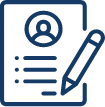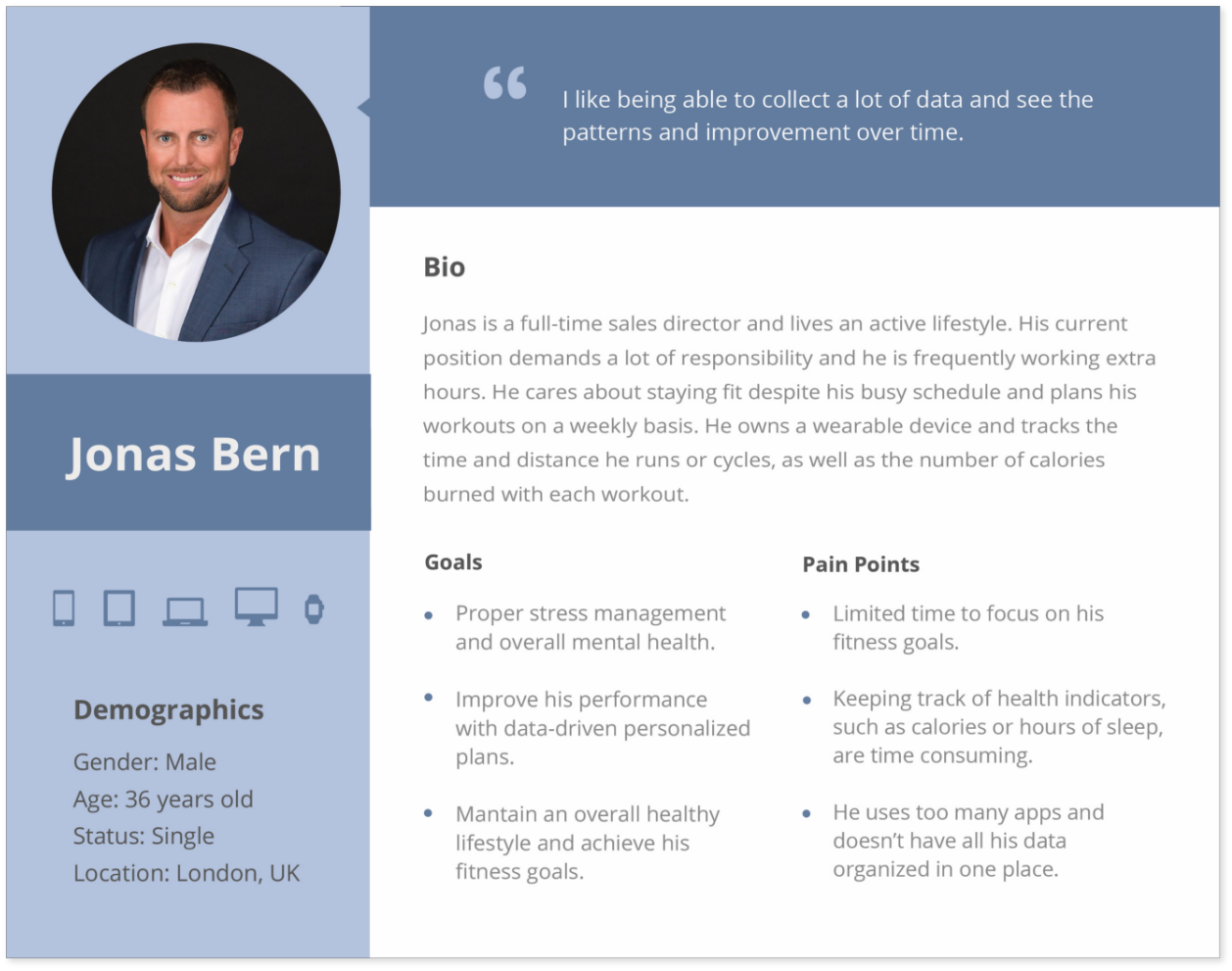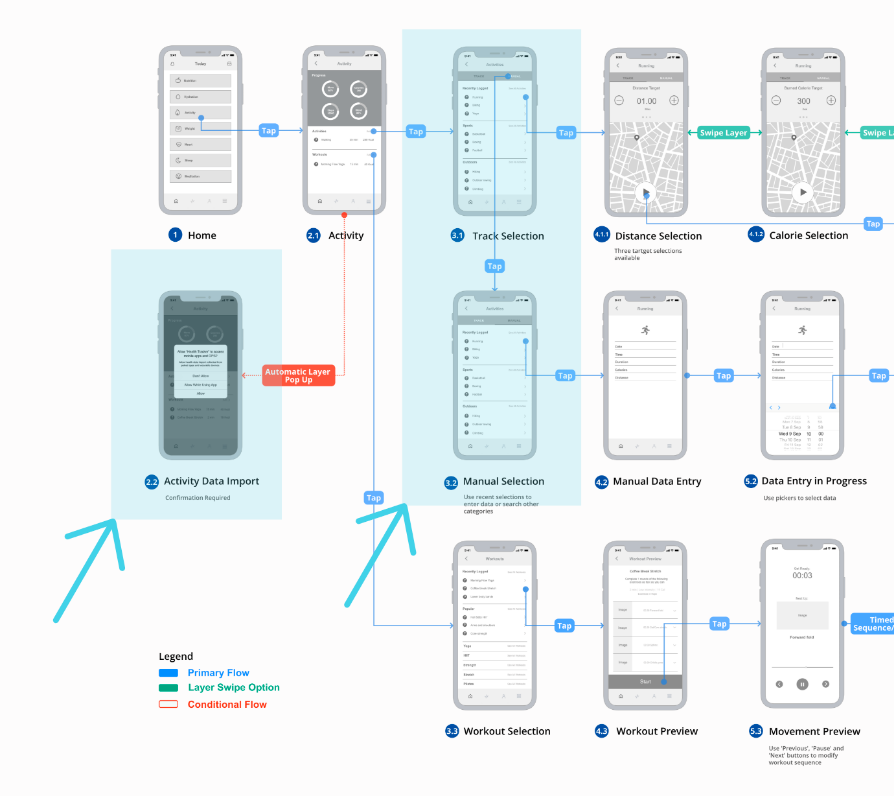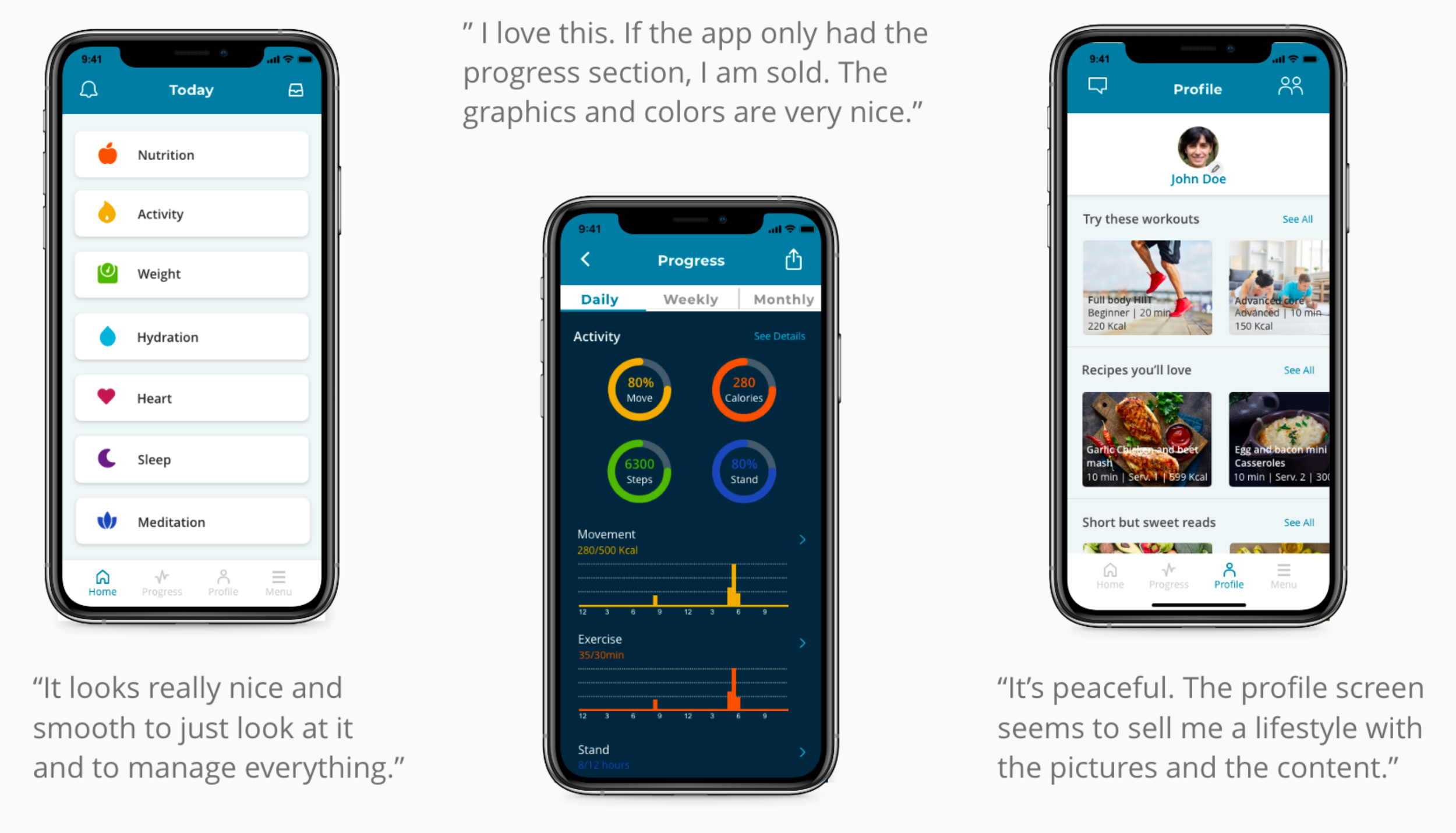
Healthy Daily Mobile App
RESEARCH, STRATEGY, AND UX DESIGN
Overview
Healthy Daily mobile app provides a personalized and holistic approach to planning, tracking, and achieving health goals. Created as an alternative to costly wearable devices, Healthy Daily records health data, such as physical exercise, food consumed, water intake, and sleep data, with only a smartphone. As the sole researcher and UX/UI designer in this project, my goals were to uncover health app users’ goals, pain points, and needs to discover potential product innovation opportunities and to design an user-friendly interface that makes tracking health data simple, provides an overview of a person’s progress, and allows users to connect and motivate each other to achieve their health goals.
Role
Research, Strategy, UX/UI Design
Timeline
April 2021 -present
Tools
Miro, UXPressia, Whimsical, Figma, Overflow, Zoom
Key Skills
Competitive evaluation, Concept testing, User interviews, Personas and empathy map, Brainstorming, Wire-framing, Design Critique, Prototype Creation, Usability Testing
Finding Inspiration
Source: Samsung Presents Growth and Innovation in the Wearable Device Market, 2019.
The inspiration behind this project came from my experience attending the presentation of Samsung’s S3 Galaxy watch in 2019. During this event I was able to learn about Samsung’s effort to create a wearable device that can track many aspects of a person’s health, such as heart health, activity levels , stress and fertility, and has the potential to be used in preventive care.
During the networking part of the event I was able to meet the developers and to hear their thoughts about mobile health technology and how can customer experiences be improved.
Opportunity
Adoption of wearable devices is impacted by the cost of trackers and compliance
A 2019 Pew Research Center survey data revealed that 20% of U.S. adults regularly wear a smartwatch or wearable fitness tracker,” but the use of these devices “varies substantially by socioeconomic status”. In contrast, that same study highlighted that “81% of Americans from 18 years old to 65+ years old own a smartphone”, thus have the potential to own one or more mHealth apps. Smart devices are still inaccessible to many consumers so a larger number of individuals would benefit from a smartphone tracker over a wearable device.
Accessibility and patient adoption of technology are challenging
An Accenture report highlights that the “use of mobile applications for health management fell from nearly half (48%) using these tools in 2018 to only 35% in 2020. Use of wearable technology too decreased from 33% in 2018 to just 18% in 2020.” This suggests the need to focus on improving the overall experience users have when using this technology to improve customer retention.
Demand for personalized and affordable technology for preventive care increases
The slow adoption of health apps and wearable technology in preventive care to monitor chronic diseases, such as diabetes and cardiovascular disorders, will increase the demand for convenient, personalized, and affordable technology that can inspire positive health changes. Health apps allow patients to have an active role in their own care and feel empowered about making health decisions that are right for them.
My Proposed Process
My approach was to first conduct generative research to further understand how people use health apps to achieve their health goals and what prevents them from adopting this technology, in order to uncover potential unmet needs and product innovation opportunities. Through a series of user interviews, I was able to identify how health app users are currently using these products, and the pain points they experience. I also wanted to know if a wearable device improves their experience or If the pains of using health apps persist. The data generated during this process helped me empathize with users’ needs, define the scope of the problem and brainstorm ideas for potential solutions to the problem.
Understanding The Problem
What are users doing to achieve their health goals?
Current digital tools available help people track their overall health or a specific aspect of health.
The first step in this process was to familiarize myself with the market space and the technology. I explored the most popular health apps available in the App Store. First I tried the apps that track overall health data such as Samsung Health, Fitbit, and Apple Health to determine what features and tools are available to users.
I also compared several apps that target a specific aspect of health like dieting apps (MyFitnessPal, Noom, Lifesum), fitness apps (Nike Training Club, Sweat, Map my Run) sleep hygiene apps (Sleep Cycle, AutoSleep), and meditation apps (Calm, Headspace) to understand how their product is used by target customers.
But how much of this technology contributes to people’s improved health?
Qualitative survey data highlights some use of digital tools to manage health goals.
In an effort to learn more about how people use Health apps to meet their health goals, I created and distributed a qualitative survey that included open-ended and multiple-choice questions. The two main goals of this study were to:
Collect people’s experiences tracking health goals with or without health apps/wearables.
Recruit remote user interview participants.
The screener was shared in several Facebook groups and completed by 72 respondents between the ages 18-53, most of them (62%) being in the 18-26 age range. 33% of all participants reported they use health apps with wearables to track their health goals, which supports the data presented in the previously mentioned Accenture’s 2020 report.
How can their experience be improved?
User interviews helped me identify specific needs and pain points health app users experience when trying to track health goals.
5 participants who completed the survey were recruited for an 60-minute one-on-one remote research interview via Zoom. During each interview, I had an open-ended informal chats and users walked me through:
Their interactions with health apps on a regular basis,
What other methods they use to track health goals,
What are the benefits and pain points of using this technology,
What changes they consider would improve their experience.
Interviews were digitally recorded with consent and supplemented with field notes.
Upon completing the interview sessions, I created an affinity map to organize the data collected. First, I wrote down all the relevant data from the interviews into post-it notes and I grouped the notes in clusters to identify insights more easily.
The main takeaways identified from this process are:
Health apps are the main tool used by interviewees to track their health goals
There are clear benefits to this technology, for example, calories and activity are well tracked.
Some pain points users experience are related to data accuracy, privacy, and pricing
Improvement suggested based on data, personalizations, and the social aspect of health.
Who are health app users?
Creating personas to identify user goals, needs, and pain points.
In order to learn more about users’ experiences with this technology, I created 3 user personas based on the data collected from the survey and user interviews. We also made an effort to highlight the persona’s attributes, motivations, and frustrations to make sure other teams can empathize with a broad age range population that has very diverse health needs and goals.
Creating user journey maps to learn about health app users’ interactions with the product.
I created user journey maps for each persona to highlight the customer goals, touchpoints, emotional experience, problems, and opportunities to improve different stages of the user experience with the product, such as awareness, selection, use, and retention. This exercise helped me explore and identify opportunities to improve the health app user experience. For example, providing support for a user’s health journey accountability via community engagement would increase the chances of retaining someone like Jennifer as a customer, who values the social interaction component.
Exploring Solutions
Defining the problem and prioritizing features for a goal-oriented redesign process.
Based on the data collected during the research process, I selected four main “How-might-we (HMW)” questions that helped define the problem to be solved.
Next, I used a Prioritization Matrix to identify the most important features to include in a product’s MVP based on what would bring the most value to the user the fastest. I identified 3 key objectives to focus on:
Feature 1: Mobile design-focused.
Feature 2: One App for all health data
Feature 3: Simple data acquisition
Feature 1: Mobile design focus
Making the most out of Mobile Device Tools
Designing for a mobile app allowed me to focus on optimizing search tools for seamless data capture using tools already built-in a mobile device. With the “Nutrition” page user enters caloric data of every food consumed in order to track daily caloric intake. Users can select between manual typing, photo scan, or barcode scan options to record caloric data.
Easy caloric data Capture for every Meal
Search tools located at the top of the page for visibility, allow user to use phone camera to scan an item barcode or snap a picture of a meal to find food items in addition to the traditional type-in search bar.
Mobile Monitoring of Sleep Health
Under “My sleep Routine” page, user can schedule a sleep routine. Set alarms for times when are best to go to bed and waking up. The optional sleep recording tool uses the microphone and movement sensor to assess quality of sleep.
Feature 2: One app for all health data
Overview of all health-related data
Sitemap highlights a commitment to a holistic and user-friendly approach to health data collection
“Today,” the main screen, was designed to collect the most common health metrics available in a simple yet efficient way.
Comprehensive progress tracking
The “Progress” screen provides a visual overview of health data in real-time and over the course of weeks and months. More data collection allows for a more comprehensive progress overview and more accurate personalized feedback.
Feature 3: Simple data acquisition
Tracking activity in real-time or post-workout
In addition to wearable pairing and fitness app data syncing capabilities, the opportunity to collect data with manual entries empowers users to have more control over data collection. If a user forgets to start the tracker before the start of an activity, data can still be collected and/or edited manually post-workout.
Quick selection of activities and workouts
The personalized feed in the “activity” page allows user to select pre-selected Categories include recently logged, most common sports, most common outdoor activities or curated workout routines.
Solution Validation and Iteration
Testing the main red routes of the app’s MVP prototype helped uncover usability issues and collect feedback.
I created an app prototype to test the MVP’s four main red routes in order to: 1) uncover potential usability issues, and 2) gather feedback to validate my design solution and iterate as needed. For this study, I recruited 6 participants (N=6) who went through a 30-minute remote usability test, (n=3) completed a moderated test via Zoom, and (n=3) completed an unmoderated test via TryMyUI to control for moderator bias. The Red Routes tested and results were:
Onboarding. Sign up for a new user account.
Nutrition. Daily tracking of calories for every meal
Activity. Tracking of physical activity in real-time/post-workout.
Sleep. Use of the sleep recording tool.
Update #1: Improving visibility and use of search tools
Update #2: Improving target selection for each activity
Update #3: Improving navigation and engagement
The final look
What’s Next
I will continue to iterate this prototype, create additional wireframes and Hi-fidelity screens to complete all necessary red routes, and perform usability tests until the MVP is ready to launch.
Thank you for reading!




































